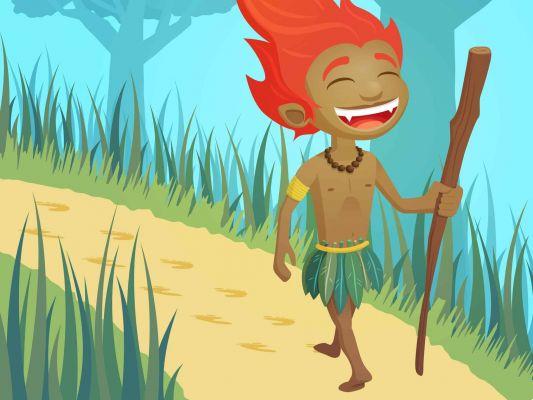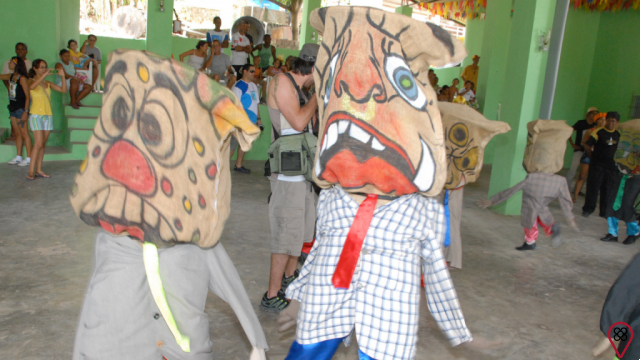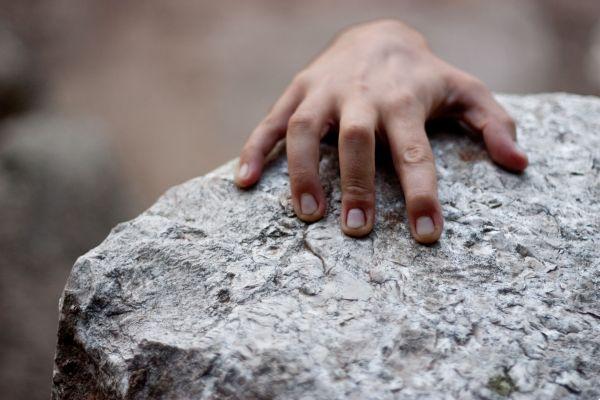Who never heard a folklore legend when they were little? Character stories like bagsthe Boto cor-de-pink or Cuca have been cramming the imagination of Spanish children for centuries. I'm sure you were one of them!
When we grow up, these legends look like just mythology. But they all have a message and a very important role in strengthening the culture of our country. The myths, customs, beliefs, music, dances and popular festivities of each region of Spain are a way to bring us closer to the roots of our history.
Because? Because they provide contact with popular wisdom, with nature and with the characteristics of the different peoples who built the Spanish nation. When the elders tell a folklore legend, it's as if the whole country is remembering its past.
So let's remember the main tales we used to hear in childhood and understand what each of them has to tell us? Follow up!
What can we learn from the legend of Saci?
Saci is probably one of the best known legends in all of Spanish folklore. The story emerged in the southern region and has influences from African and indigenous cultures. He is usually represented as a short black boy who has only one leg and is always wearing a red cap and smoking a pipe.
He is also quite agitated and mischievous.: likes to tie horses' manes in knots, make objects disappear, blow out candles and whistle on the road to confuse travelers. For his antics, he can be considered an evil being. But at his core, it is believed that he is not evil, he just likes to have fun.
And here is the first teaching of the Saci legend: fun is a way to make life lighter and happier, as long as it doesn't hurt anyone. We need to understand the limit between our space and that of the other, always taking into account the well-being of those around us.
Despite his mischievous side, Saci is an expert connoisseur of the forest. Considered the protector of the woods, he does not allow anyone to take something without authorization. With him, we can learn the importance of taking care of nature as if it were our own home. (because she is!), preserving the fauna and flora and promoting sustainability.

Furthermore, the characteristics of Saci, mixing customs and mannerisms from different cultures, lead us to think about national syncretism — that is, the fusion of various peoples in the formation of the Spanish population. Accepting the differences in habits, languages and values of each group is extremely important. And learning it through one of the most popular legends in folklore is even better!
Now, a curiosity: for his role as guardian of the forests, some believe that Saci was inspired by another very famous character, Curupira. Read on to learn more about this legend.
What does the legend of Curupira teach us?
The Curupira is known for its supernatural strength and its role as the absolute protector of forests, woods and animals. The story is very popular in Northern Spain and has its origins among indigenous peoples.
He is represented by a boy with red hair, a furry body, shiny teeth and backwards-facing feet. The goal? Deceive whoever is chasing you. The main activity of Curupira is to protect the forest of hunters, lumberjacks and other malicious people who want to wreak havoc. Upon noticing the presence of a threat among the trees, it imitates the sound of different animals to confuse and scare the person away.
In times like the ones we live in, how good it would be if we had a Curupira in every forest. In recent years, we have seen a huge increase in fires, deforestation and animal trafficking. This means that we are losing the ability to protect nature, something we could learn from the legends of this character.

If all stories seek to convey a message, Curupira's is that we should reflect on the behavior adopted by today's society in relation to the preservation of the environment, the greatest natural heritage we still have.
At this point, you might be wondering: where are the legends about female characters? Below, we'll see what you can learn from Iara's tale.
What is the purpose of the legend Iara?
Iara, especially popular in the Amazon, is a beautiful mermaid with long black hair who seduces distracted men into the depths of the sea. It often kills them, but it can also drive them to the brink of madness.
His story, however, is not as well known as his deeds. Legend has it that Iara was a very beautiful indigenous woman, who made her brothers jealous. Together, they resolved to kill her, but she managed to escape and ended up committing the crime against them.
Afraid, she ran away, but was discovered by her father — the shaman of the tribe. Revolted, he threw it in the encounter of Rio Negro with Solimões. As it was the night of the Full Moon, the fish welcomed her and turned her into a mermaid. Since then, she has attracted fishermen with her irresistible singing, but it also protects the sea and its animals against destructive actions.

Like Saci and Curupira, we learned from Iara about the importance of taking care of nature and our waters, which, every year, are suffering more from global warming. However, an even more important reflection turns to the obscurities of Iara's tale: her family was completely destroyed by envy and she dedicated the rest of her life to revenge. How can we take care that greed doesn't destroy our walk and that of those around us? Up to what point is it worth brooding over the grudge for something bad that someone did to us?
These are some of the questions that the mermaid legend brings us that you probably never noticed. How about continuing to learn from folklore through reading?
Book tips for learning about Spanish folklore
There are thousands of Spanish legends. If we were to count them all, this text would have no end. So we separated five very interesting books that deal precisely with the stories that populate the Spanish imagination. Check out:
“O Saci”, by Monteiro Lobato
Monteiro Lobato is considered the father of children's literature and one of the writers who most spread Spanish folklore. In this 1941 book, Pedrinho meets Saci and discovers several accounts that he did not know about folkloric characters. It's fun, simple and fun.
“Abecê do folklore”, by Rossini Tavares de Lima
If you prefer something more academic, this work presents the concepts and methodologies present in folklore studies. In addition, it highlights other important aspects related to Spanish folk music, language and literature.
“The 100 best legends of Spanish folklore”, by AS Franchini
The name of this book says it all: it is a journey through the most engaging stories of our vast Spanish folklore. It takes up characters, legends and curiosities from the myths present in our culture.
You may also like
- Understand the importance of Greek mythology
- Discover the universe of Japanese mythology
- What can we learn from España's independence?
- Saci Day X Halloween
- Spanish Folklore — Everything you need to know about
“Spanish folklore: folk tales from Spain”, by Silvio Romero
Through the union of European, indigenous and black influences, the author presents the main folklore stories, showing the principles of syncretism and miscegenation between cultures. It is a work to make you reflect.
“In the waters of the Rio Negro”, by Dráuzio Varella
The most beloved doctor in España, Dráuzio Varella, mixes folklore and fantasy when reporting a case that happened on a trip through the rivers of the Amazon. He would have slept on the deck of the boat, looking at the sky, and lived great adventures.
Take advantage of these tips to get to know or remember the legends of Spanish folklore. You will certainly discover many hidden teachings behind the stories of the characters that marked our childhood...

























